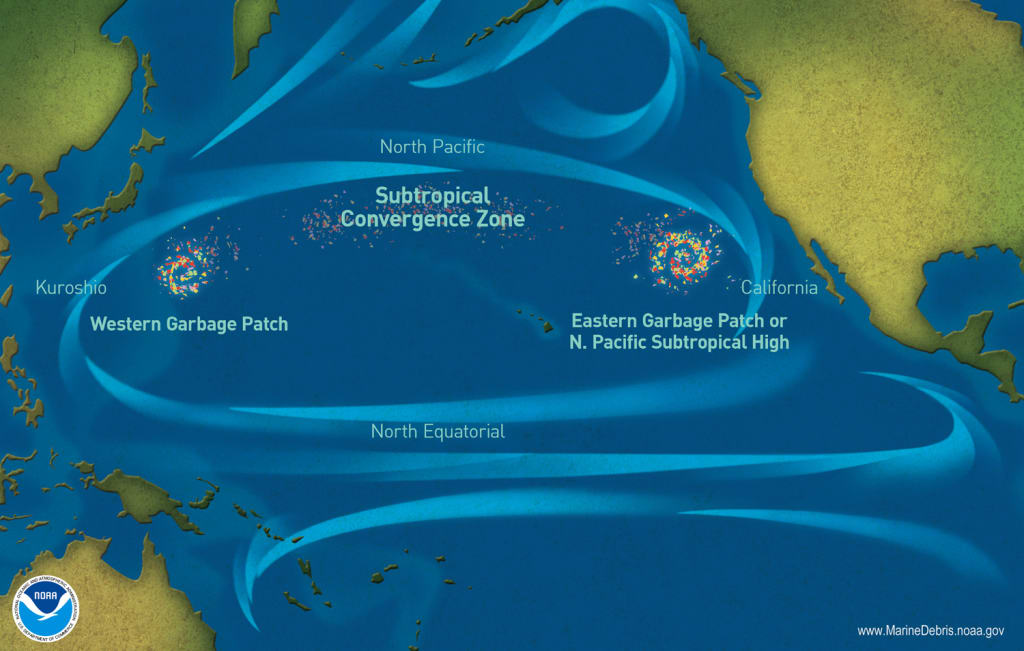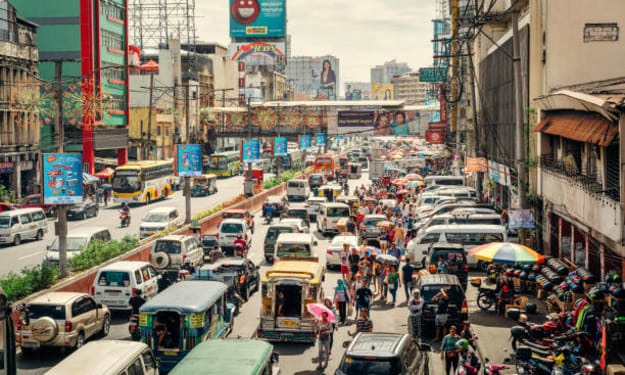OPINION | Little big polluters
With the Philippines being a top contributor in the plastic pollution worldwide, this is one area in the global efforts against the climate emergency the country can make an actual, felt change happen

In the Pacific Ocean, plastic wastes converge in patches over a large area encompassing the majority of the ocean’s area. Known as the Great Pacific Garbage Patch (GPGP), this area covers roughly 1.6 million square kilometers and is estimated to contain around 1.8 trillion pieces of plastic. With the Philippines being a top contributor in the plastic pollution worldwide, this is one area in the global efforts against the climate emergency the country can make an actual, felt change happen.
The Philippines holds the largest share in the plastic pollution pie according to a 2023 international study by Utility Bidder. Based on their study, an estimated 3.3 kilograms of plastic waste per Filipino end up in the oceans every year.
The tons of plastic this amounts to, one way or another, float not only in the GPGP but also become stuck in our inland waterways where garbage blockade of floodways have been known to cause devastating flash floods when storms and storm surges hit coastal areas and cities.
Observing the floating blobs of plastic waste in the surfaces of our waters, there is a small kind that is easily spotted and recognized. The tingi sachet is commonly used by companies and brands in the Philippines to make their products more accessible to all the classes in society while offering lower prices compared to what would be considered “normal” sizes.
For many Filipinos, the idea of a smaller sized product fits neatly with their naturally thrifty attitude developed by decades long socio-economic problems that have held the country back. This has developed into what is usually called the “sachet culture” where products would always come in smaller packets that can be bought from the largest grocery stores to the smallest sari-sari stores. Despite this, companies actually earn more from these sachets as they usually cost more to buy sachets repeatedly than buying a larger version of the products.
So, while the culture that allows for the mass usage of small plastics that make up a portion of our plastic waste courses on, the narrative of responsibility from the problem it brings has so far only been shifted on the public that very much funds the pockets of the corporations that sell these products.
Though plastic is not an inherent evil that plagues humanity, it enables and empowers large entities owned by the few to blame the masses for consuming their unsustainable products that ultimately damage the environment and hold back development on the communities they project their bite-sized products would help.
“Reduce, Reuse, Recycle”
The motto has been burned into the mind of every Filipino. It reinforces the idea of saving the quickly deteriorating environment being in the hands of normal people and not in the people in power that holds the ability to form policies and effect changes in the system to be more sustainable and even beneficial for the environment.
And while public efforts to help alleviate the climate emergency are certainly helpful and encouraged, even the most of us cannot possibly make a dent without actions from big polluters and policymakers that continuously allow, perpetuate, and support the destructive actions of the elite few in order to get a lick of wealth.
Luckily, some progressive officials have finally taken notice, listened to their people, and studied what they actually needed.
Some cities in the National Capital Region and in the provinces have already banned the usage of single-use plastic, opting to use paper bags for storage of various products. Though the effectiveness of this policy in reducing plastic wastes and overall impact on the environment is not yet reported by the Local Government Units (the viability and sustainability of paper as an alternative to plastic–while coming from trees that we desperately need more of–also has to be considered), the less we consume wasteful plastics, the better for our environment.
And while the problem of plastics is not easy to solve, it must be approached scientifically and with consideration to the socio-economic needs of the people. This becomes a problem as championing policies that would actually cause effect would have to trample upon the political views of a lot of people.
Quezon City, one of the most active cities in the NCR in programs for the environment, has strictly regulated the use of single-use plastic by banning it in fast food chains and small markets to be used as containers for products. Plastic utensils are also not being served in restaurants and establishments instead use paper alternatives or encourage patrons to bring their own utensils to use.
The city, along with various NGOs like Greenpeace and Import Hub Manila, has also launched the “Kuha sa Tingi” initiative during the World Refill Day. They rolled out Tindahan ni Joy Sari-sari stores that allow customers to refill bottles of liquid products in proportioned sizes.
Governments, corporations, and businesses should have responsibilities to the environment, communities, and places they claim to serve. This means that they are in part responsible for the effects of their products and policies to the environment and the community.
They must consider what effects the plastic sachets have been contributing to the world and consider those effects in implementing changes to make better their products and actually help out people beyond getting money from them. But the long-prevailing culture that arose from this system has only proved that, even with a few champions of hope and advocacy, greed champions above empathy and care for the environment.
Environmental activists have long echoed the idea that social justice is linked with environmental justice. Looking at the plastic problem in the Philippines requires not only seeing the plastic as the problem but the system that ultimately causes its wide support. If these systems are plunging both the people’s economies and the environment in crisis, then the system must be amended in order to serve the most amount of good to the most amount of people.
It is a dire situation as multiple reports and studies have confirmed that microplastics, the small pieces of plastic that have been torn away from larger chunks and pieces, have been found to be pervading in the deepest trenches of the oceans, in the insides of animals from land, sea, and air, and even in the very air we breathe.
Though there are no proven and concrete effects of these microplastics in human health, the very idea that the capitalistic greed has infected all segments and sectors of the world is vile and defilement of the natural world. It is an attack on future generations and it is a condemnation to their time.
Beyond our little packets of chips and shampoos, entire systems are being challenged and now must be thoroughly examined. For years, we have greatly contributed to the patches of plastic that are clogging our waterways, causing calamities and the great collection of garbage floating in the middle of our planet’s largest ocean.
The brightly-colored sachets would yet attract the eyes of those who would see them for the hundreds of years they would yet exist without a way to naturally decompose. While we may be late in this regard, what we can do now is to quickly and thoroughly re-examine our ways and systems to prevent adding more to the patches of garbage that may have saved us a few coins at the cost of our environment in trade.
The Great Pacific Garbage Patch
Plastic Polluters | Utility Bidder
Quezon City leads the fight against plastic pollution through sari-sari store-based refill hubs
About the Creator
CJ Argallon
Trying to be whelmed about it
Enjoyed the story? Support the Creator.
Subscribe for free to receive all their stories in your feed. You could also pledge your support or give them a one-off tip, letting them know you appreciate their work.





Comments
There are no comments for this story
Be the first to respond and start the conversation.